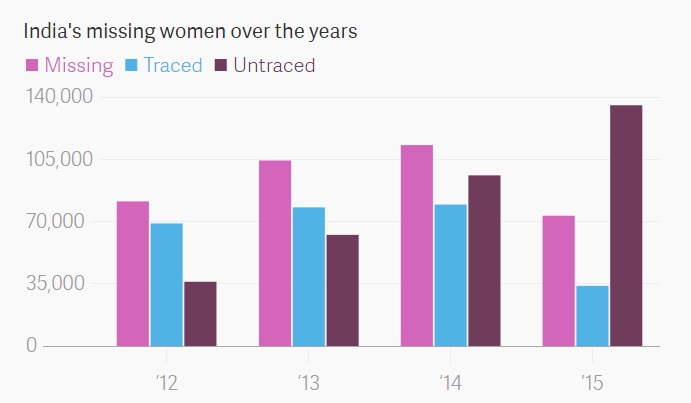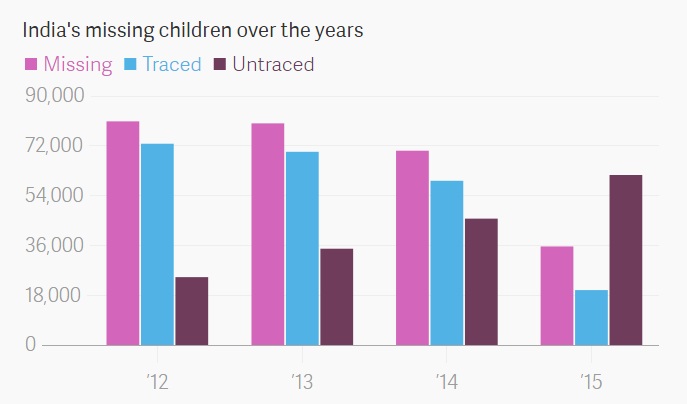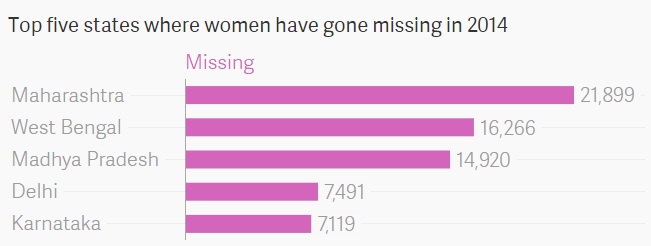In 2015 alone, some 73,242 women have gone missing (until September), of which only 33,825 have been traced so far, India’s home ministry said in a reply to a question in the Lok Sabha on December 8.
That translates to roughly 270 women going missing every day. After adding the backlog from last year, the number of women who remain untraced in India as of 2015 stood at 1,35,356.

Source: Lok Sabha | Data for 2015 is till September | Untraced cases include backlog from previous year
The case of India’s missing children is no better.
This year, until September, there were 35,618 cases of missing children, which translates to 130 cases of missing children daily in India. Of these, only about 19,849 children were traced. After adding the backlog from last year, 61,444 still remain untraced.

Source: Lok Sabha | Data for 2015 is till September | Untraced cases include backlog from previous year
According to data from the National Crime Records Bureau, trafficking of minor girls and women constituted about 76% of human trafficking cases in India over the past decade.
A 2010 report prepared by Stanford University for the Asia Foundation indicated that 90% of India’s trafficking in persons is domestic, that is, interstate and intrastate. The report further added:
Based on case studies and NGO interviews, the diversity of India’s states and territories leads Trafficking In Persons to differ greatly based on the characteristics of a given region. NGOs indicated that trafficking was prevalent in destination states because of high inflows of migrants, high demand for sex workers, generic gender/caste issues, a lack of community responsibility for social security and welfare, and the absence of strong legal framework. For transit areas, the main reasons cited were infrastructure and, naturally, location between source and destination state. Notable, poverty was not mentioned as a primary trafficking influence in destination or transit regions.
The most prevalent sectors employing trafficked people in India are the following: commercial sex work; bonded labour in different industrial and agricultural sectors; domestic work; entertainment sector (circus, camel jockeying); and begging and other cartel-like exploitative activities.
Maharashtra topped the list of states with the highest cases of missing women. Of the top five states with the most cases of missing women, four have some of India’s biggest metropolitan cities. These include Maharashtra (Mumbai), Delhi, West Bengal (Kolkata) and Karnataka (Bengaluru).

Source: Lok Sabha
This article was originally published on qz.com.










